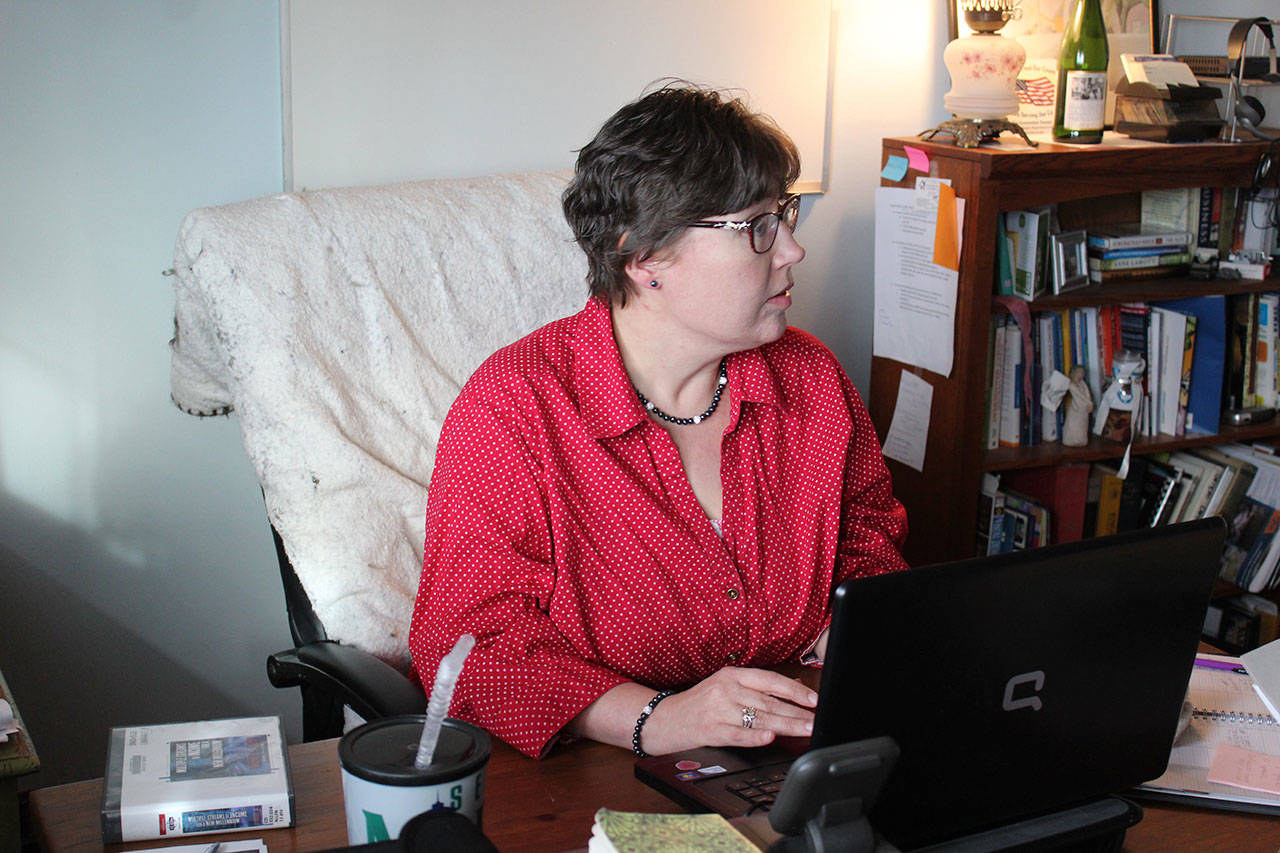Hoarding is personal for Tammi Moses.
She grew up in a Port Angeles home with towering piles of acquisitions. Her mom and dad accumulated different things and discarded none.
She couldn’t invite friends over, couldn’t tell them why and didn’t know where to turn for help.
“It was the 1980s, there wasn’t a name for it,” says Moses, who now lives in Oak Harbor. “It was just too much stuff and no one talked about it.”
Senior year of high school, she moved out.
“Growing up in a hoarding situation, stuff is more important than you are,” Moses says. “It can be heartbreaking.”
Structure and a streamlined life came when she served in the Navy from 1992 to 1996, stationed on a supply ship near Guam.
Hoarding is also a business for Tammi Moses.
In 2013, she created Homes Are For Living, LLC with a motto of “Hoarding Impacts Everyone.” Emphasizing creating “positive hoarding solutions,” Moses likes to joke she’s a CEO — chief encouragement officer.
The idea for the business came from attending meetings with local nonprofits that were addressing lack of affordable housing.
Some were dealing with people who had accumulated too much stuff to move. Landlords threatened eviction over excessive piles of possessions while first responders feared potential fire, safety and health hazards of hoarding.
“Because I have this unique perspective on hoarding, it was suggested I talk about it,” Moses recalled. “Then it became my mission.”
She focuses on mitigation, prevention and education about the issue of hoarding, which is considered a mental disorder. It’s defined as an extreme difficulty in discarding or parting with possessions because of a perceived need to save. Research suggests some 15 million people in the United States hoard.
Moses went back to school and received a bachelor’s in psychology in 2013 to better understand the complex disorder.
Reasons for hoarding can be depression, anxiety or childhood trauma.
“Or to keep people at bay with boxes,” she said.
Relatives and friends are usually hesitant to say something, fearing they’ll be accused of negatively judging, and the person will further withdraw, Moses said.
“I’m able to provide a space for people to tell me what is going on, clear of judgment,” she said. “The first step is facilitating that conversation, then you can start working on a plan.”
Working one on one with a hoarder is tricky. It takes compassion and empathy, a soft touch with a hard message.
“If they actually let you in the door, that’s a huge step,” Moses said. “They can’t just open a junk drawer and say, ‘I don’t want to deal with it’ and shut it.
“Their entire house is a junk drawer. They fear making the wrong decision. To them, making no decision is safer than making the wrong decision.”
What may be regarded as junk to the outsider may be considered a sentimental object, magical life moment or prized possession to the person wanting to keep it close.
According to The Hoarding Project, a Tacoma-based nonprofit dedicated to understanding the behavior, 92 percent of the time hoarding occurs, it’s accompanied with other diagnosed mental illnesses, making it difficult to treat.
In the past two years, Moses has also successfully marketed herself online as a coach for downsizing and de-cluttering. Using Skype and cell phone video she can see challenges and then develop plans of action for clients.
“My home office is in my living room and it gets very disorganized,” said one client, Rob Garcia of San Diego. A business consultant, magazine publisher and Air Force Reservist, Garcia met Moses through an online veterans forum.
“She has really good ways to consolidate things and keep surfaces clear,” Garcia said. “It made me feel so much better about things not to let stuff accumulate.”
Moses says she gets hoarding clients from many northern Washington counties because there are few resources unlike other counties. The King/Pierce County Hoarding Task Force, for example, meets monthly to develop sustainable solutions for hoarding-related problems so families can safely remain in their homes.
Moses would like Island County to do the same so evictions, foreclosures and forced clean-ups can be avoided.
Families, landlords, neighbors, property management companies, emergency responders, schools and others are all affected by the problem of hoarding, she said. “There’s a lack of resources,” she said. “There’s a lack of understanding about what hoarding is. People don’t know what to say or do.”
For information: Homes Are For Living: www.homesareforliving.com


